This September, I had the privilege of working on the first eight days of the roof replacement project at the Roland Burton Hut. This was the longest VOC trip I’ve ever been on (by one night). It was also the first time I’ve done any kind of construction work. I learned a lot.
The trip started early one drizzly Monday morning as I miraculously managed to get to Jacob Grossbard’s house more or less on time. There, Jacob, John Sherk, Ryan MacDonald, and I conferred on Jacob’s porch as tools were repacked and plans compared. Or more like Jacob, John, and Ryan conferred as I stood around trying not to get in the way. Jacob was sick, so he (wisely) decided to stay home. During the first 24 hours of the project, only Ryan and I would be at the hut.
Having never met Ryan before, I was a little apprehensive that I would be (surely) trusting him with my life as I tried to stay safe at the worksite. My fears were quickly assuaged as I talked to him about wind turbine construction, his years in the VOC, his time building the Watersprite hut, and other entirely wholesome topics. After paying penitence in Lionsgate traffic, we made two stops at the Park Royal Home Depot and at a Tim Horton’s in Squamish. Ryan called the helicopter company to see if they had radios in Squamish that they wanted to give us. They did not. So we hit the trail.
Ryan carried two packs up: camp gear on his back and tools on his front. I carried up only one pack with camp gear, but, due to my poor packing, it was about as heavy as Ryan’s load and had various equipment precariously strapped to the outside. You would easily mistake me for someone on his first backpacking trip when he brings too much stuff. Hmmm… maybe that wasn’t so far from the truth…
Ryan found that the two packs balanced each other well but that they pinched his nerves. The situation improved slightly when he swapped the pack positions. Nevertheless, we both were happy with our policy of doing 100 metres of elevation gain and then stopping for a break.
We saw lots of people on the Rubble Creek trail. We passed most of them multiple times—we’d walk past them quickly, burdened as we were like mules, and then they’d pass us back as we took our break. Most people doubtless thought we were weird. Doubtless they were mostly right.
We arrived at Garibaldi Lake an hour later than Ryan or I expected or wanted. By then the weather had cleared into a perfect end-of-summer day—not too hot and not too cold. We took the high-water trail to the canoes (though it turns out the low-water trail was passable and easier) and then ate a much-anticipated lunch. At first, we were dismayed to find a combination lock securing our canoes. Luckily, it was not long before I discovered that the combination was written on the wall inside the boathouse.
The paddle to Sphinx Bay was a quick and pleasant 45 minutes. It was Ryan’s first time canoeing. I think he left the canoe thinking it wasn’t that bad. I know I left the canoe wanting to do lots more… a wish that would later be granted.
We landed at a nice beach. We soon realized that we were 300 metres too far north. Ryan dropped his extra bag and we commenced the light bushwack to the hut, glad to have finally arrived, albeit later in the afternoon than we had hoped. We explored a bit, and Ryan located an excellent gravel bar southeast of the hut where we could all pitch our tents. I returned to the canoe to retrieve the tool bag and paddle the canoe around to the mouth of Sphinx Creek, a much better landing site. Ryan, meanwhile, eagerly got to work. He said he needed to demonstrate that his honorary membership was justified by taking apart the roof in less than 24 hours. I was less motivated to work, but before long I joined Ryan in prying off the metal sheeting, helping as he taught me, but not accomplishing nearly as much as him. Certainly I didn’t match the gusto with which he tore things apart. By gusto I mean yells, exclamations, and expletives.
That night, I slept in my tent, but Ryan was determined to be the last person to sleep in the original Burton Hut. I slept well. Ryan did not. Some animal (perhaps a wolverine?) had lots of fun noisily playing with the handle on a bucket labelled “food up for grabs”.
Morning came and with it came sunshine. Good! The helicopter would be able to fly. We had brought along extra food in case it did not. All the same, we were relieved that we would soon receive luxurious supplies (fresh fruit!) and that the hut construction would continue without delay. The first heli load was scheduled for 9am, but we got an InReach that it was delayed. Excellent, more time for demolition!
Before too long, the first heli load arrived, then the second, then the third. There were thirteen loads in total. Our day involved watching for the helicopter, standing away from drop areas, unfastening loads, refastening slings, wrapping up material from the old hut to be carried away in a humongous net, and doing it all as fast as possible while simultaneously continuing the demolition. Ryan and I maintained utmost efficiency in our multi-tasking.
You can understand the concept of heli rotor wash, and watch videos of it, but you can’t really understand rotor wash until you feel it. It is like a sudden, unexpected wind that wants to kill you. It is something you anticipate but that still surprises you. It defies organization. It renounces order. It eschews predictability. Most importantly, it foils all attempts to keep old insulation, bits of styrofoam, and even metal sheets from blowing into the bushes. (Future crews: put old insulation in contractor bags and put heavy stuff on top so the rotor wash doesn’t blow it all away!)
After the helicopter left us for the last time—alone and desolate—we set to work waterproofing. Torrential rain was forecast for the next day. It was left over from a typhoon or something. Luckily, our friends back at the heli loading site had sent lots of tarps to cover things with. We were somewhat perplexed by their InReach instructions to protect the hut but not the building materials. Weren’t we getting rid of the old hut anyway?
Around this time, Will Beattie showed up. You can imagine our surprise at seeing a strange man suddenly walking towards us from Sphinx Creek! But he was an old VOCer and he was here to help. We were very glad both for his wonderful company and his knowledgeable assistance. He said he had a pleasant packraft paddle across the lake.
As evening came, we regularly walked up the hill to look for canoes. None could be seen. So I went back to the beach where we had landed and had a lovely swim. I was kind of glad we had landed at the incorrect place because we’d found probably the nicest swimming beach on the lake. Dusk fell, the wind picked up, clouds came, and rain began to fall, and still there was no sign of the canoes. I decided to start cooking “lentil bolognese” with mashed potatoes. (We were blessed with excellent recipes from Emma Ghelfi, who had been planning to come on the workhike when it was scheduled for August but was now back in Edinburgh.) Ryan and Will set up a few tents that they found in the gear delivered by the helicopter.
Just as supper was ready, VOCers arrived! Smiles were on all faces as Anton Afanassiev, Aaron Lee, Jeff Mottershead, Quintus Zhou, and John stepped out of the darkness. The three who had sent up their bags by heli had no rain gear and were soaked. The hut became crowded and steamy. We ate the lentil bolognese. It was good. I had prepared ten portions, and there were only eight of us, but it was the correct amount of food if not a little scanty.
Emma’s menu was delicious and a highlight of the trip. It heavily featured legumes. For most people, this merely resulted in some gas. (It was a good thing we weren’t sharing tents.) For Anton, this meant he prepared a lot of his own meals because chickpeas and lentils “are not Anton-friendly” due to his medical condition. Fortunately for the rest of us, this resulted in some amusement as we watched him eat foods like “backcountry ceviche” (tuna covered with green Gatorade powder) and various other foods that featured Gatorade and/or hot chocolate powder in unexpected ways. If we were to write a trip cookbook, it would have two kinds of recipes: delicious meals (from Emma) and bizarre meals (from Anton). It remains an open question whether the categories overlap. Jeff’s one foray into mixing Gatorade and hot chocolate resulted in something “not recommended”.
The rain began to intensify, and some newcomers went off hastily to set up their tents. Others opted to sleep in the little that remained of the hut. They had an interesting night. The tarps covering the hut blew off several times in the night, leaving its “inhabitants” exposed to the wind and rain. Being in the hut, Anton wasn’t in his tent, so it decided to blow away and go on a journey of its own. In any case you can be sure that those in the hut slept poorly. But, as Jeff optimistically said, it wasn’t any worse than the 1.5-hour sleeps he’d been getting in the preceding nights as he prepared the helicopter loads.
The next day, we got to work, despite the torrential rain and chilling wind that was blowing down off the glacier. It was not long before we were all completely soaked. I realized that my rain pants were not actually waterproof as everything below my butt became drenched. The worst was the boots. They were frigid and soaked and there seemed to be no hope to dry them at all in the coming week. To make matters worse, now that the hut was dismantled, there was nowhere to go to get respite from the weather. This was perhaps the most demoralizing moment on a VOC trip that I’ve done—and that’s saying something!
I did not feel at home in construction. I tried to help as I could, as taught by the many excellent and amiable teachers present, but I still felt like a fish out of water. (Except I was completely wet, so I definitely wasn’t out of water.) I was exactly like Bilbo Baggins. I too was not yet a burglar (or, in my case, a hut-builder). I too wished only for my warm home and a singing kettle. I too was not going to get it. I too kept working.
At some point, the second floor had been mostly dismantled, and it was time to clean up the mix of insulation and rat poop that was sitting on plastic and the floor. The rain was quickly turning it into a rat sewage concoction. The rat sewage was quickly dripping down into the kitchen. When we noticed this, Aaron and I took it upon ourselves to clean up.
In some places, the rat poop was 30 cm deep. This was 30 cm of not insulation, not garbage, but just rat poop. In other places, the composition varied. There were parts where the rat-poop-to-insulation ratio got as low as 1:2. There were other places where there appeared to be green lentils mixed in. We weren’t sure if they were lentils that the rats had stowed or if they were just more poop that was older. At least we were entertained as every now and then a live rat would peek out before scurrying back into its hideous refuse.
We stuffed the more insulation-rich parts into contractor bags with our hands, protected only by permeable work gloves. The more rat-poopy parts we scooped with the hut shovel. (Keep this in mind next time you’re shovelling snow.) The more liquid parts—which tended to flow towards and coat our boots—we vacuumed up with the shop vac.
We were soon covered with the stuff. The worst, though, was not the appearance of the concoction, or how it felt on our gloves, but the smell. It smelt acrid. After all, the mixture had been festering in the rain for a day. I wore a fabric Covid-era mask. Aaron wore a buff. It wasn’t enough. Like the immune system learns to detest a pathogen, my nose learnt to detest the smell of rat poop. For the rest of the trip, I could detect the aroma in the hut, and indeed I could not spend more than a few seconds in the hut without feeling sick and finding my legs force me outside.
Cleaning out the rat poop was by far the most gross thing I’ve ever done. And Aaron did more of the gross work than I did.
Eventually we started to get hungry. Then we started to think about lunch. The problem was, now that the hut was encrusted in rat sewage, there was no sanitary place to cook. That’s when we decided to erect John’s wonderful MEC Guide Tarp a suitable distance from the construction site and move all our food away from the rat sewage and into its relative protection. By this time, the food bins had been covered in rat sewage, so Anton reorganized the food and poured the sewage off the lids then wiped them with hand sanitizer so that we could safely (?) use the lids as cutting boards. We cooked up some falafel mix to put in wraps with our fresh carrots, peppers, cucumbers, and onions. I was surprised by how good and warm and warming it was. The falafel mix was also lightweight and easy to prepare. I’m going to have to add it to my backcountry supplies on my next big trip.
That day felt like a marathon. I was glad when night fell and I could finally get dry. It felt wonderful to have a quick frigid swim in Sphinx Creek, put on dry clothes, and feel not warm but at least warm enough in my sleeping bag. It was a windy night. My tent was completely fine and I slept well, but those who did not have freestanding tents had a harder time. Quintus’s tent collapsed three times. I am now convinced that the extra weight of a freestanding tent is totally worth it.
The next day was also wet, but I somewhat improved my situation by inserting plastic bags between my socks and my boots. My feet still got soaked but they weren’t quite as cold.
The only time the weather caused a serious safety hazard was when it began to snow and a layer of slush built up on our somewhat sketchy scaffolding. The slush was very slippery. Luckily, it melted before too long.
I should probably say something about the work we were doing. We first removed the metal sheets from the old hut, then removed the tongue-and-groove from the south wall. We left the tongue-and-groove on the north wall because it was needed to keep the old arches in place. We then covered the south side with new tongue-and-groove and Roofnado vapour barrier. This was the stage when I learned to wield a hammer. Once we finished on the south side, we removed the old tongue-and-groove on the north side and replaced it too. (We would later need to do some chiselling to get the tongue-and-groove to fit at the top.) Once the tongue-and-groove was finished on the lower level, we started putting up the new arches. It took much lifting (by everyone) and skill (from Jeff and John) to get them aligned correctly.
Ryan and Aaron were replaced with fresh unspoilt blood as Melissa Chen, Nolwenn Deschamps, Connor Jakes, Katie Sattler, and Jacob joined us, along with the ladder they had carried up. (Jacob was now feeling better, but he said he had made the right decision about staying home because he slept a lot on Monday and was definitely sick. We were quite glad he hadn’t been at the hut to spread his sickness to everyone else.)
With the new crew came new weather. I had been seriously contemplating leaving the project early, on Friday. There is a point where suffering through work in the rain and wind does not feel worth it. On Friday morning, however, the weather forecast predicted no more rain until Tuesday, so I decided to stay. I’m very glad I did. While the forecast was not completely accurate, the weekend was mostly dry, and it turns out that construction is much more fun in dry, sunny weather, and I was happy with the contributions that I made.
It was now time for the heaviest construction materials we had brought: three massive wooden beams. We lifted the beams into position with our hands, a winch, and jacks, one beam going upon the crest of the roof and the other two under the new arches. Next, we added structural supports underneath the hut and framed the walls of the hut with Douglas Fir boards. Each framing board required two brackets and 28 nails to secure it in place. It was a lot of nailing. I learned that hammering in nails is harder than it looks. All too often, nails bend, and you’re left with a dilemma: you can either try to get them straight and hammer them in or else remove them with a cat’s paw and start over. I spent a lot of time struggling through both horns of the dilemma. I quickly realized that Jacob was framing the hut at least three times as fast as I was. Jeff and John were perhaps even faster still.
Jeff works like a waterfall: ceaseless and always pounding. He starts shortly after dawn and ends well past dusk, taking only three twenty-minute breaks in the day to eat large quantities of food, without apparent care as to whether the food is delicious or bizarre. As someone said, “If we just gave Jeff a wrap every now and then, I bet he’d never stop working at all.” We did not test the hypothesis.
I do not work like a waterfall. One time we were working well past dark, prussiked to ropes and hammering in nails where no hammer is supposed to fit. Around 11:30 pm, I realized that I had just bent five nails in a row. My rate of contribution was negative: the longer I stayed out, the more harm I created. So I went to bed. Even then, VOCers kept hammering away in the dark by the light of their headlamps, racing to get work done before the rain started up again.
Eventually, Monday came, and it was time for me to leave. I was looking forward to returning home and being warm and dry, but I was also sad to leave the beautiful hut and project, with only four people staying behind. Knowing that rain was coming again tempered my desire to stay any longer. Still, it had been a superb feeling, working with my comrades to build a hut that we hoped would shelter outdoorspeople on their adventures for decades to come, if not for the next hundred years.
Melissa, Connor, Nolwenn, and Katie left the work site around 10 am. (One of them needed to get to Vancouver in time for an appointment.) Quintus and I paddled across the lake with them, located some supplies hauled in by Joseph Chiao the night before, and paddled them back to the hut. By “supplies” read white gas, bleach, and beer. Anton was very happy about the beer.
I went for a final swim in the lake, then Quintus and I cooked up a last luxurious lunch of bacon, pancakes, falafel mix, and fresh veggies. Surveying the garbage to be carried down, I chickened out of carrying one of the heavy contractor bags with wet insulation. My garbage hauling was limited to one small steel beam.
Quintus and I left the worksite for good around 4:30pm. Eager to get going, we quickly paddled across the lake and then began hiking down in the dusk. As we got to the Barrier Lookout, it was just getting dark enough that we would need to put on our headlamps, so we decided we might as well stop for a quick dinner of dried salami, cheese, candies, and trail mix. We then continued to the car in darkness. Quintus performed admirably despite feeling a cold coming on. He drove me home to Richmond. We got there at 11:30pm.
After we left, only four crew members would remain: Jeff, John, Jacob, and Anton. They would now be installing insulation, covering it with plywood, adding another layer of Roofnado, and finally topping the hut with its sheet metal hat.
What did I learn?
I learnt that construction is hard. I have much more appreciation now for people who have to work outside in any weather. I also learnt that when it comes to working with hands in unpleasant conditions, people like Jeff and John are beasts and goats and that I am neither a beast nor a goat—at least not yet.
What lessons did we learn about planning hut construction?
First, having an extremely competent person like Jeff design the hut and manage the project is invaluable. Second, construction is much more pleasant in good weather, and wherever possible we should only build huts in July and August. (Of course, we did not do the Sphinx project now by choice—but that’s something for another trip report.) Third, there will inevitably be times when additional construction materials must be purchased because of unforeseen needs. It would be wise to plan a few “resupply trips” of day-hikers in advance to bring up needed materials every three days or so. That way, the team at the hut could InReach requests and people back in Vancouver would not need to scramble to find hikers to carry up the matériel. Fourth, everyone should bring lots of warm layers (puffies). I slept while wearing every single warm layer that I had brought and I was just warm enough to be sort of comfortable. Others who brought fewer warm layers were cold. Fifth, if you plan on removing insulation, bring N95 masks. You will inevitably encounter catacombs of rat poop and your nose will thank you. (From trip reports, it sounds like similar rat sewage was discovered in the Brian Waddington Hut when its roof fell off. The crew to Phelix brought N95 masks. We didn’t.) Finally, when it comes to food:
- Delicious, nutritious, easy recipes are great for morale.
- It is nice to have a break from legumes.
- Gatorade powder is awesome. Bring lots.
- When there is shared food up for grabs (e.g., apples) advertise it.
- Set up a nice kitchen under a tarp away from the work site. It’s worth the effort. You’ll use the kitchen a lot.
- If you bring cans, bring a can-opener. (Haha guess what we forgot!)
- Buy the groceries a few days in advance so you have time to pack everything. Packing everything into plastic bins is a two-person job and requires a lot of time. Bins are heavy. Stuff adds up.
- Sort the groceries into different bins based on the kind of food and label the outsides of the bins. Otherwise it’s hard to find things.
- Bring up lots of white gas with the food. A half-dozen people will use a litre of white gas a day.
What are my final thoughts?
I want to thank everyone involved in the project for the time, effort, and willpower they gave. Jeff contributed immeasurably in designing the hut, constructing the arches, painting, preparing heli loads, and leading the team during the workhike. John was invaluable in his work but even more in how he taught skills in such a friendly and instructional way. It was wonderful to have a legit professional carpenter on our team. And thanks John for bringing so many tools for us to use! Thanks, Anton, for insisting that we bring $85 of Gatorade powder. Anton toiled through a bunch of logistics coordination and, along with Jeff and John, worked through the entire project. Other than when he was sick, Jacob also worked through the entire project. Even when he was sick, he was always a source of good advice. Ryan was the demolisher-in-chief and afterwards continued proving that he was a workhorse. Adam Steele handled the InReach communication with finesse and somehow convinced people to bring us supplies just when we needed them. Emma kept our spirits going with delicious recipes. And many others did excellent work on the hut, ran resupply missions, carried garbage out, and rallied the troops through word of mouth and social media. To all of them: thank you!
Related trip reports:
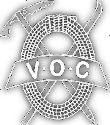

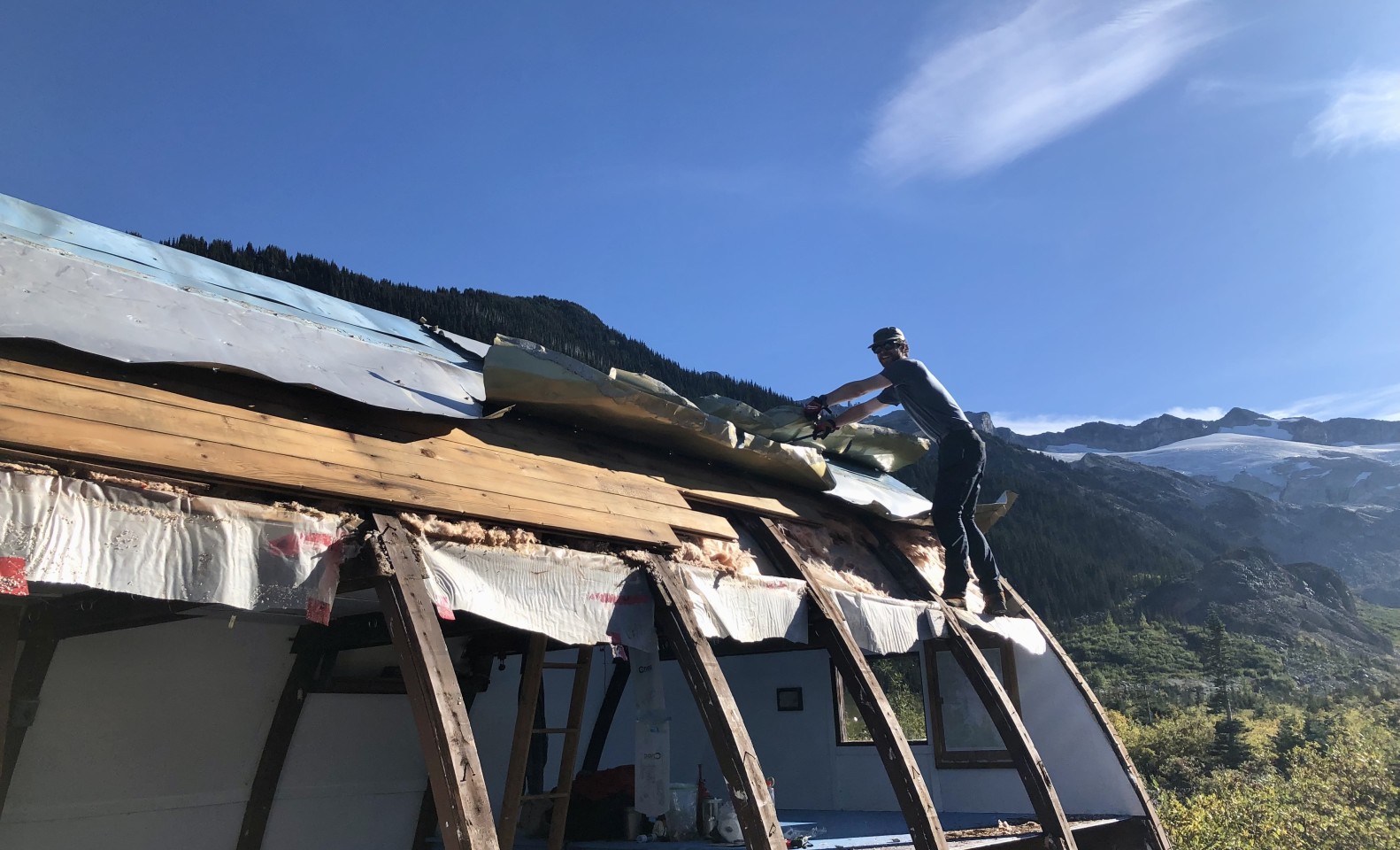


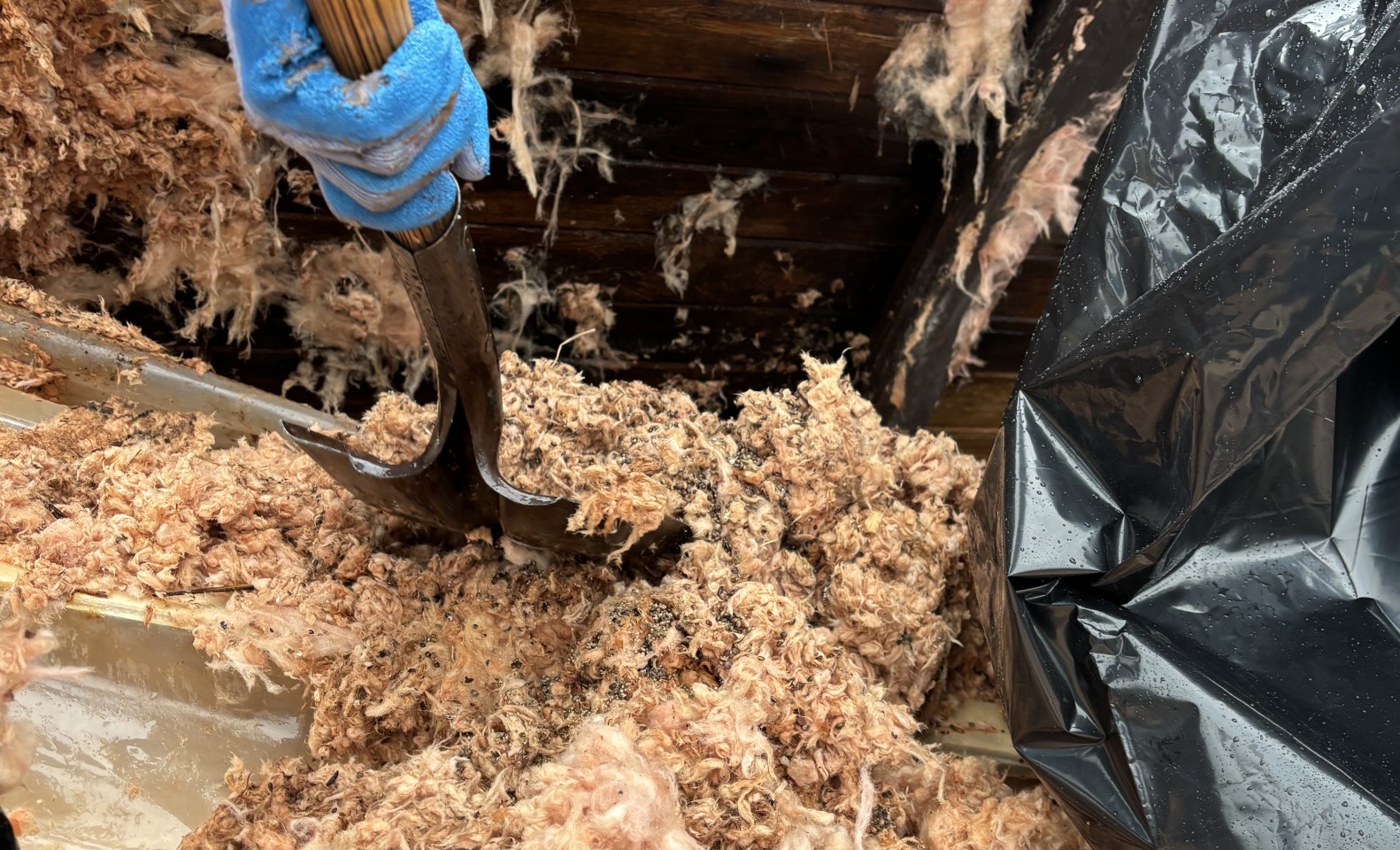

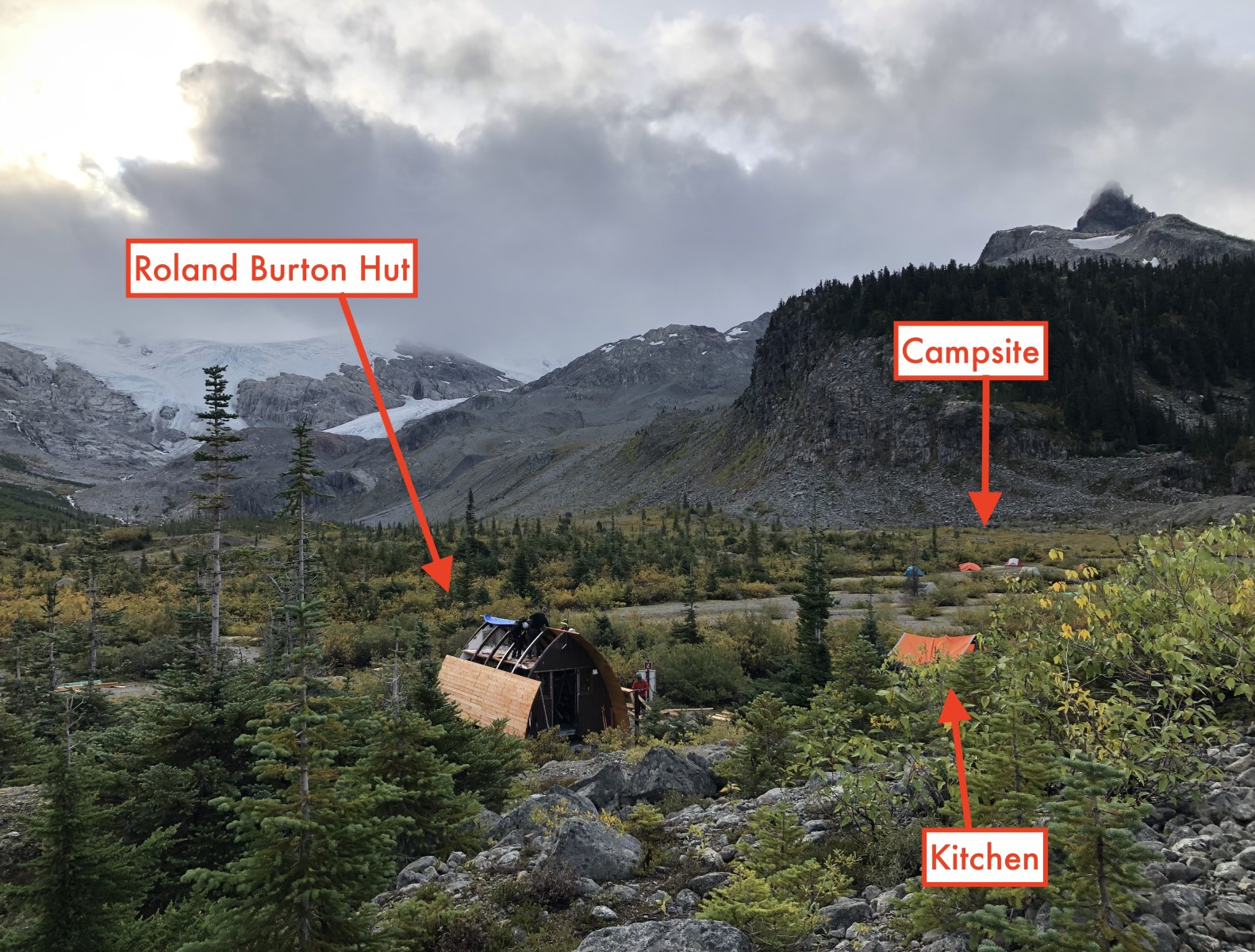
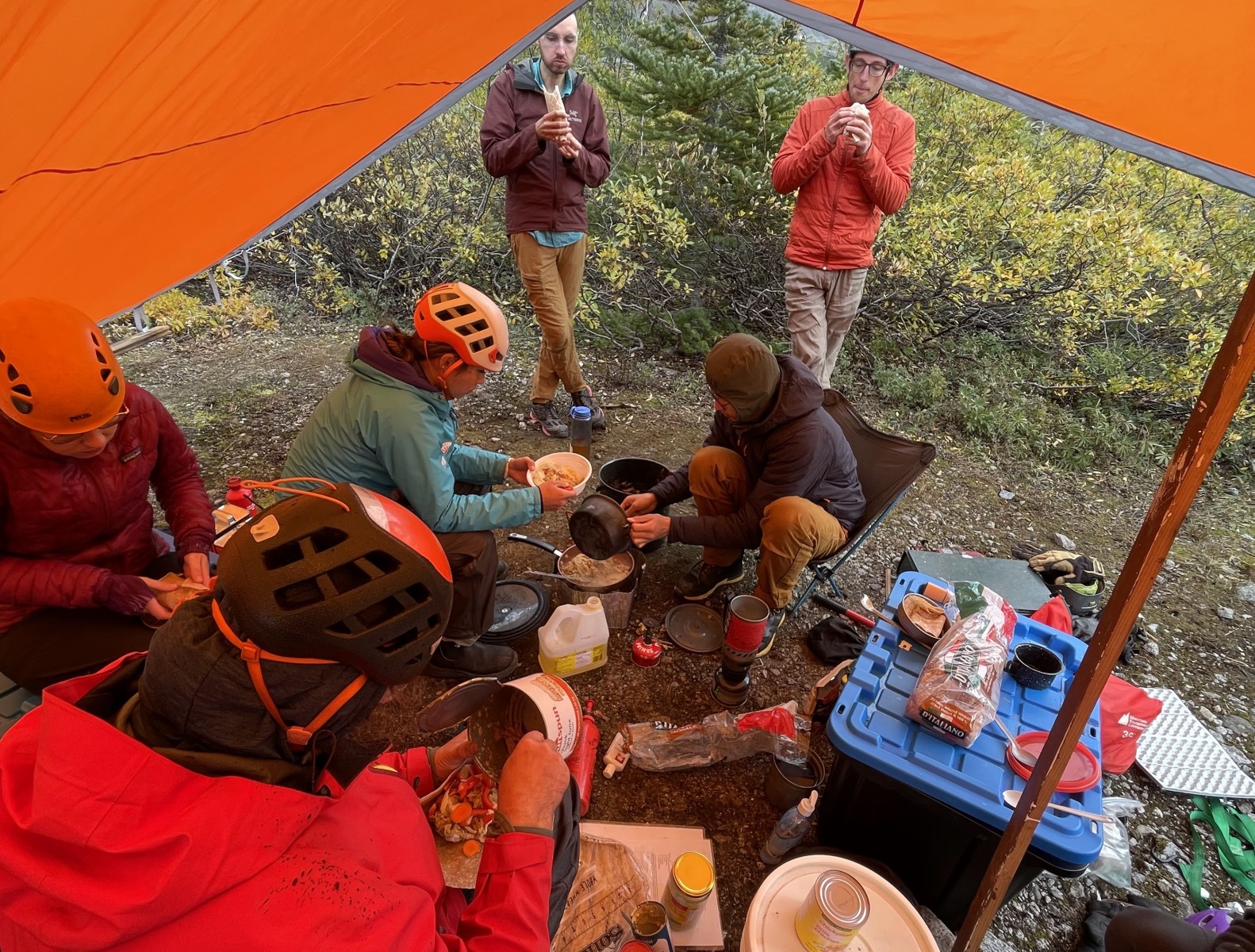



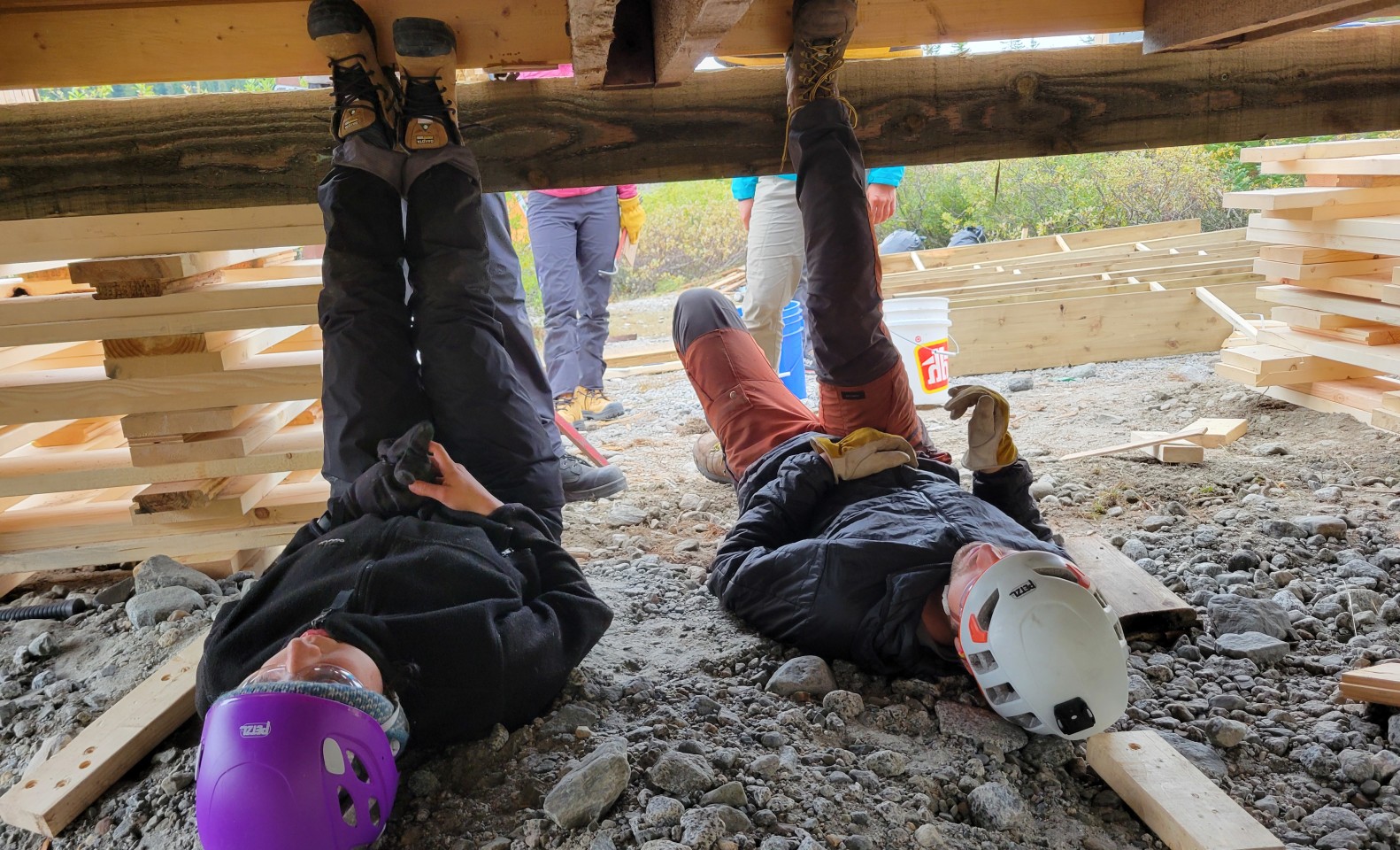




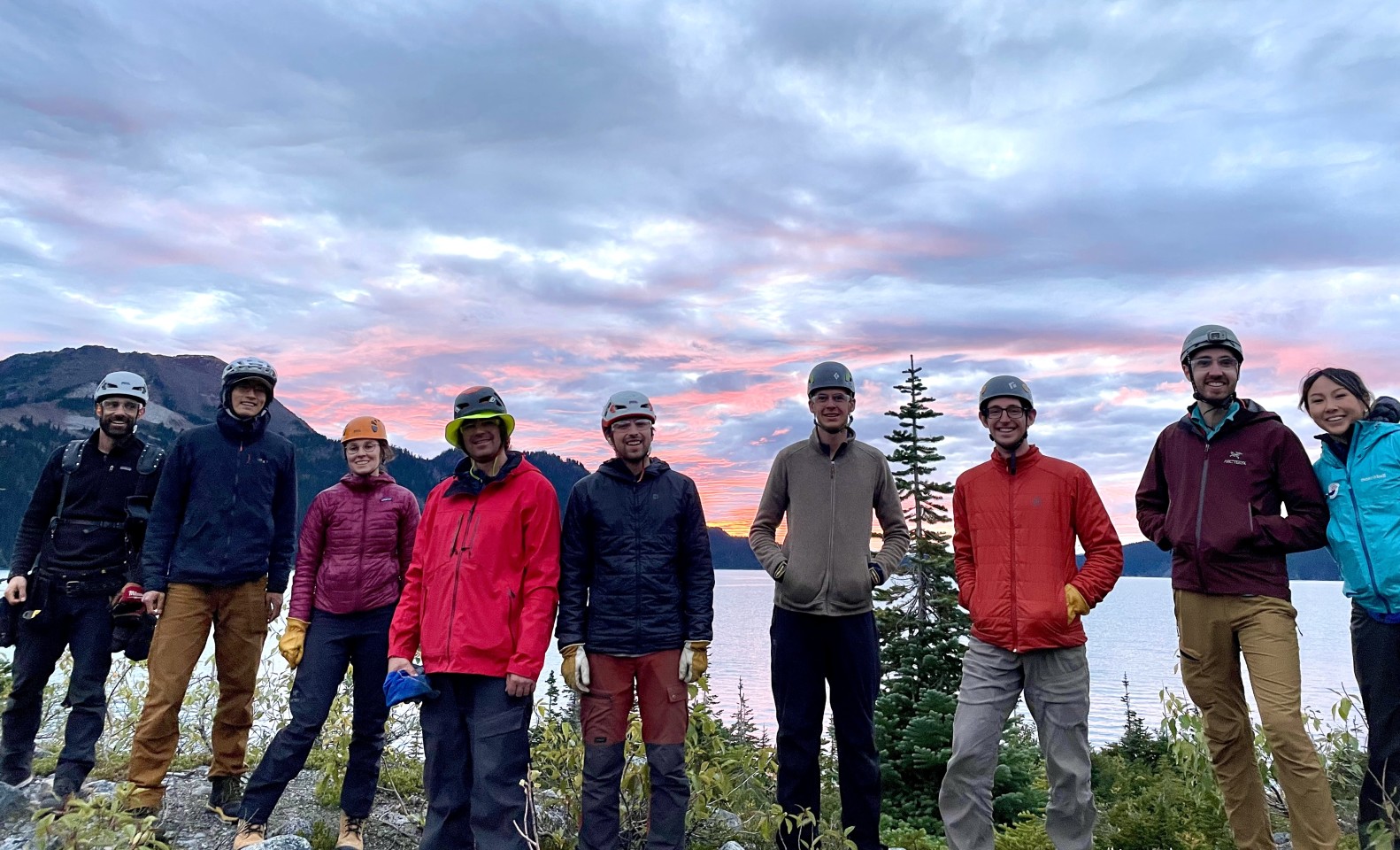
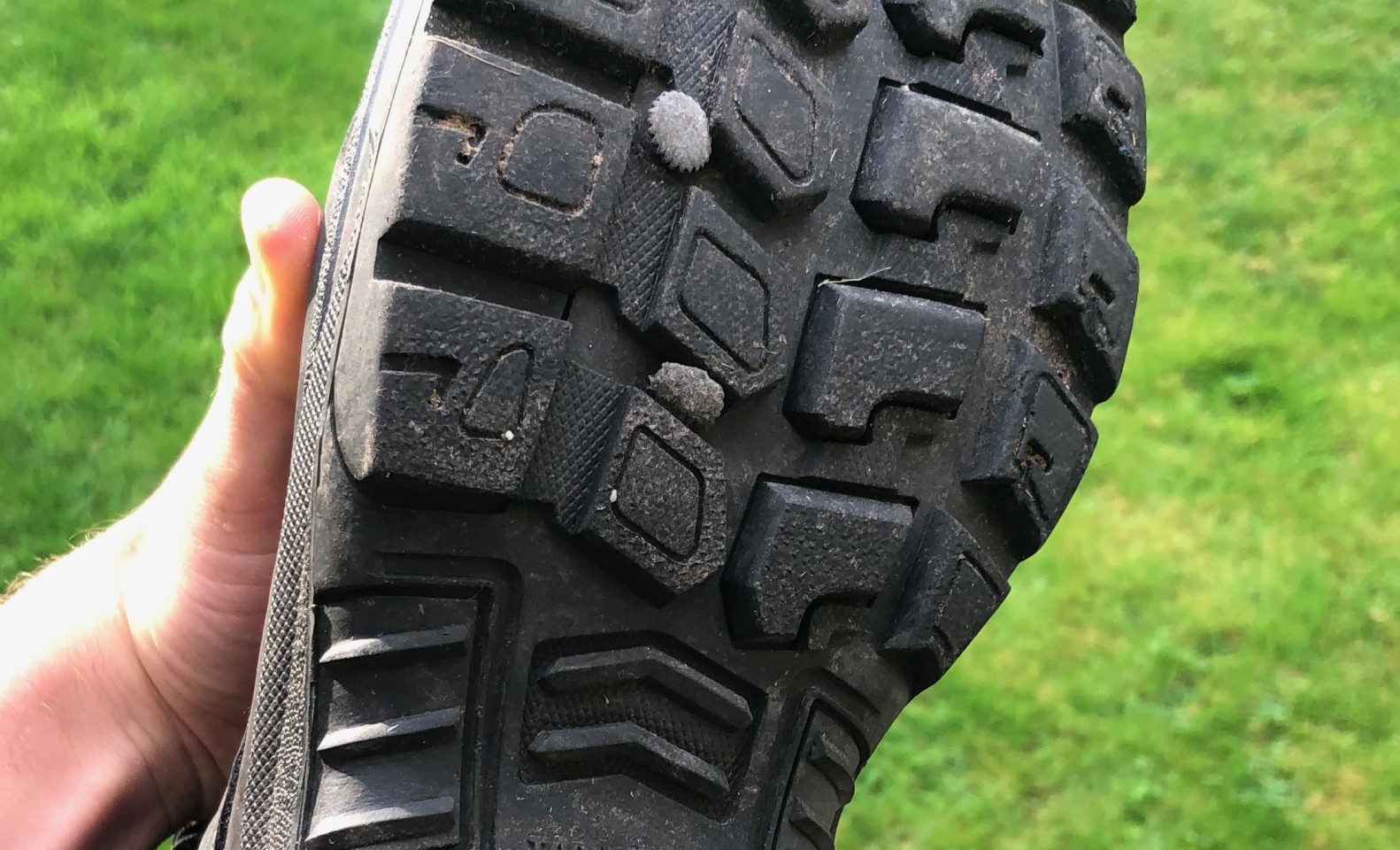


Thanks for the trip report, Duncan. Definitely sounds like type two fun. Still, part of me wishes I was there.
Roland, we did miss you up there—but your legacy lives on!
Most excellent trip report, Duncan! Laughed my ass off.
You did a great job up there for someone new to construction, you (and everyone else, really) clued into the most important thing early on: just keep finding something useful to do. Granted, when we’re all wet and freezing to death it kind of motivates that behavior hahaha. Was a pleasure working with you.
(Nice job putting the images in a gallery, that function has always escaped me, going to have to find it now!)
Was a pleasure working with you too!
(Re the gallery: click “Insert shortcode” and then “Carousel”. Julian Larsen taught me this trick…)